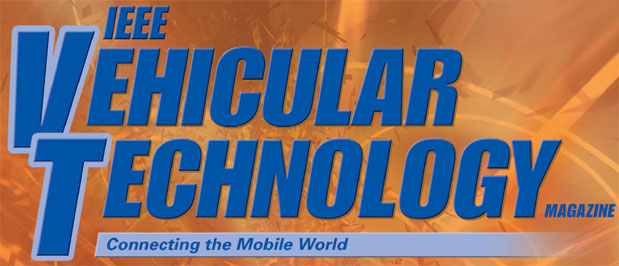Call For Papers:
Special Issue on Backscatter and Reconfigurable Intelligent Surface Empowered Wireless Communications in 6G
Important Dates |
|
|---|---|
| Manuscript Submission by: | 18 August 2021 (extended) |
| First Round Reviews by: | 28 October 2021 |
| Second Round Submissions by: | 23 December 2021 |
| Second Round Reviews / Editorial Decision: | 22 February 2022 |
| Final Articles by: | 4 March 2022 |
| Publication: June 2022 | |
Though the fifth generation (5G) mobile network system is rolled out worldwide, research attention in both academia and industry has shifted to the sixth generation (6G). Exciting new applications—such as multisensory XR applications, connected robotics and autonomous systems, and brain-computer interactions—will expect support from 6G communications. These cutting edge applications pose new challenges to the requirements of data rate, latency, connectivity density, and energy efficiency, which cannot not be tackled by current 5G technologies. The main principles of 5G technologies lie in increasing the number of antennas, migrating high frequency bands and deploying more access points. Although significant performance gains can be achieved in terms of spectrum efficiency, they have drawbacks such as high power and hardware cost, increased network maintenance cost, and excessive signal processing complexity. Hence, new transformative transmission technologies need to be developed to support these new applications and services.
Due to recent advancements in micro-electro-mechanical systems (MEMS) and metamaterials, ambient backscatter communication (AmBC) and reconfigurable intelligent surface (RIS)-aided wireless communication have received extensive research attention. Unlike traditional wireless communication systems, AmBC does not need an active radio frequency (RF) component on the tag, and it can harvest energy from ambient RF sources in the radio environment. Therefore, AmBC requirements are low-cost and could be deployed ubiquitously. In addition, the RIS, which consists of a number of passive reflecting elements, can reconfigure the wireless propagation environment by carefully tuning the phase shifts of the reflecting elements, and thus can customize wireless channels based on design objectives. The RIS can be small and lightweight, enabling low-cost installation on indoor ceilings and walls, as well as street lamps. Due to these appealing advantages, AmBC and RIS have been recognized as some of the most promising techniques in 6G networks.
Research on AmBC and RIS is still in its infancy. This special issue is soliciting recent contributions that address the major challenges in channel modeling, analysis, optimization, and implementation of AmBC and RIS empowered wireless communication systems. Topic of interest include but are not limited to:
- Channel modelling for AmBC and/or RIS-aided wireless networks Communication-theoretic foundation and analysis of AmBC and/or RIS-aided wireless networks
- Algorithms and protocol design for AmBC and/or RIS-aided wireless networks
- Deployment optimization for AmBC and/or RIS-aided wireless networks
- Integration of AmBC and/or RIS into emerging wireless communication applications such as wireless power transfer, mobile edge computing, physical layer security, unmanned aerial vehicle communications, etc.
- Localization and sensing for AmBC and/or RIS-aided communications
- Energy efficient design for AmBC and/or RIS-aided communications
- Application of AmBC and/or RIS in high-frequency communications, such as mmWave/Terahertz communication and visible light communication
- AI-empowered AmBC and/or RIS-aided communication systems
- Testbeds, experimental measurements in AmBC and/or RIS-aided wireless communications
Submitted papers should contain state-of-the-art research material presented in a tutorial or survey style. All manuscripts should contain state-of-the-art material presented in a tutorial or survey style, and must adhere to IEEE VTM guidelines IEEE VTM guidelines.
Submit PDF version of complete manuscripts to http://mc.manuscriptcentral.com/vtm-ieee
Guest Editors
Cunhua Pan (lead)
Queen Mary University of London, UK
Marco Di Renzo
Paris-Saclay University, France
Chau Yuen
SUTD, Singapore
Derrick Wing Kwan Ng
UNSW, Australia
Ertugrul Basar
Ko University, Turkey

